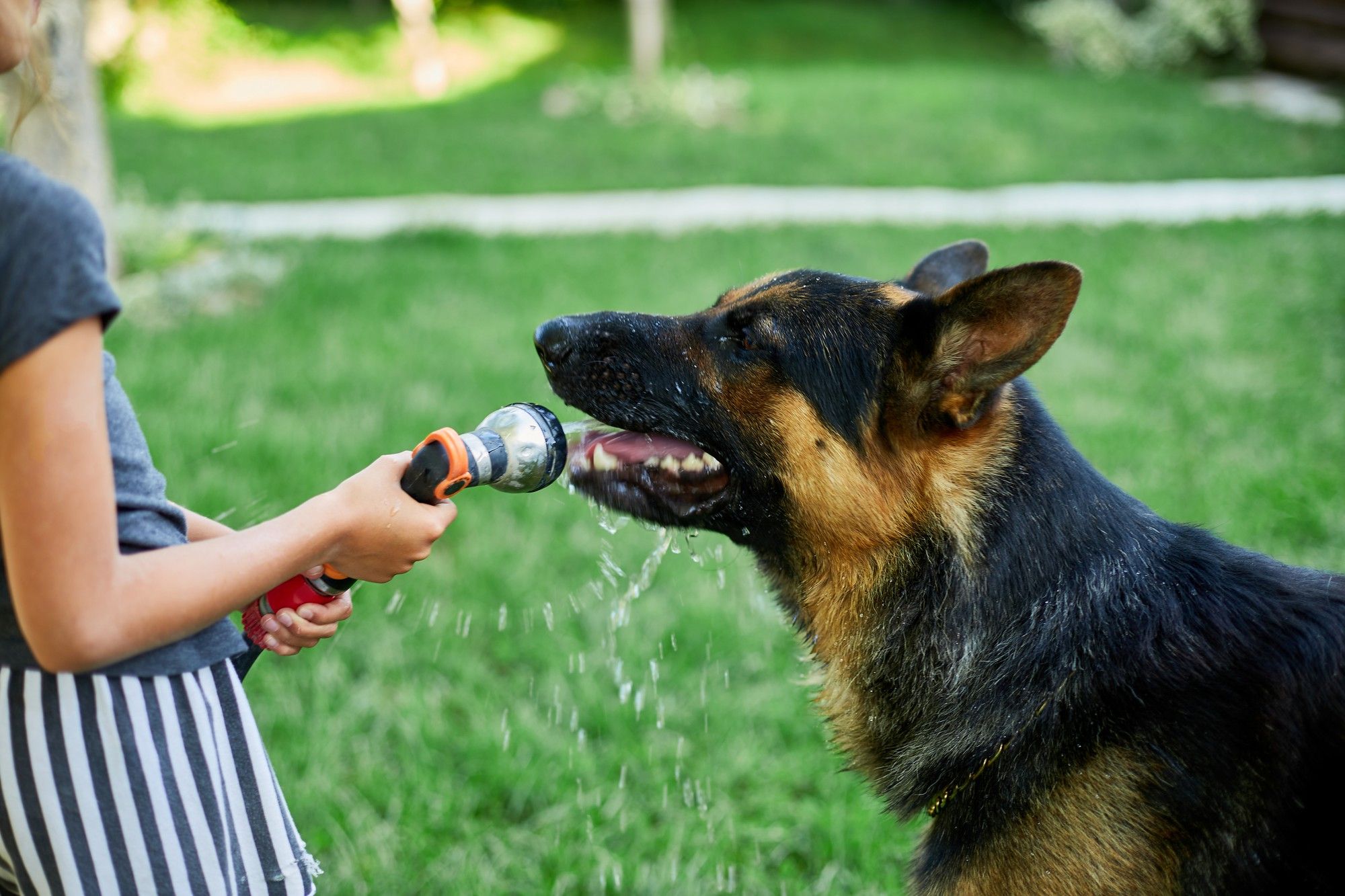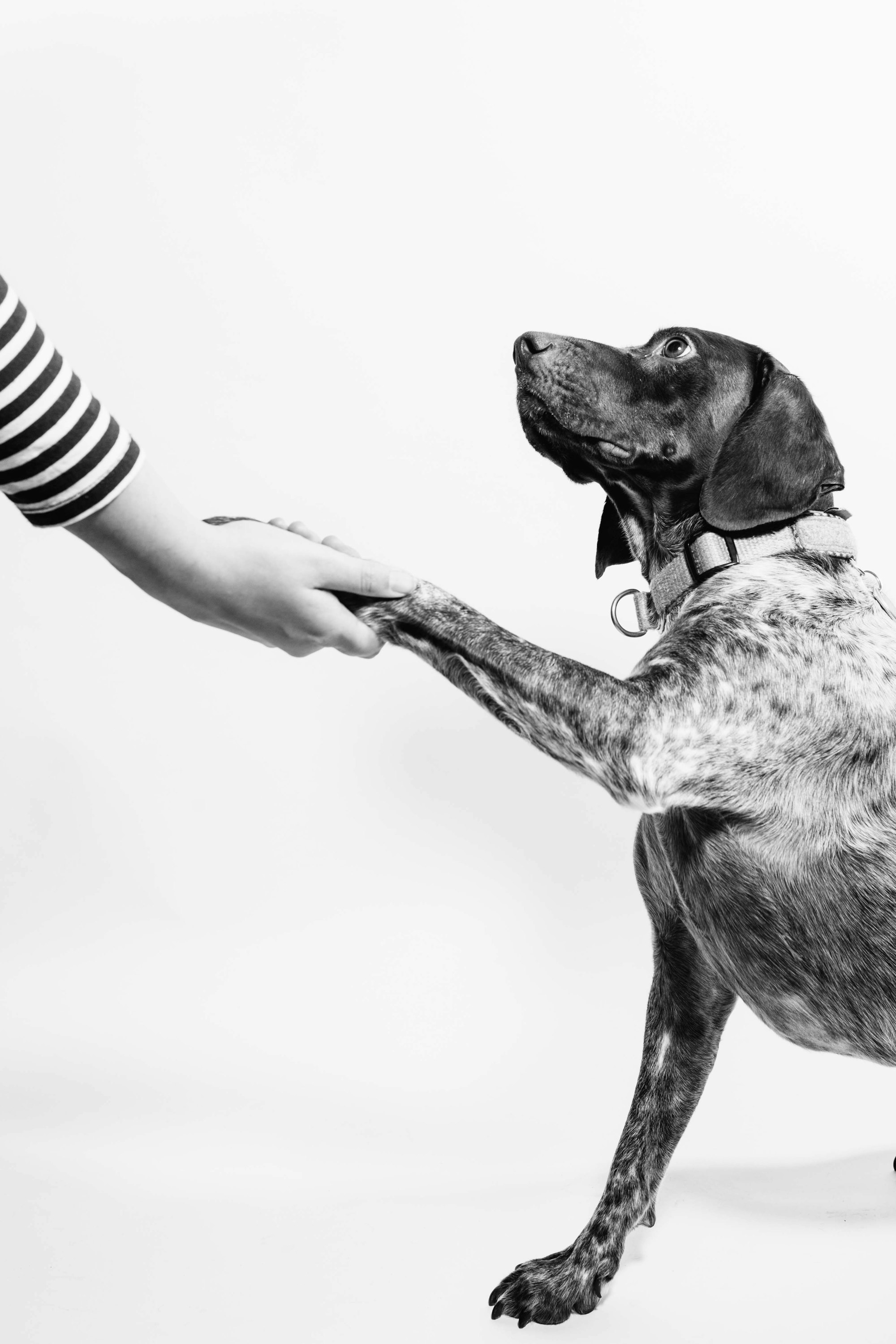Have you noticed your dog lapping water with an insatiable thirst, always hovering around the water bowl? If so, you might ask yourself, "Why do dogs drink a lot of water, and how much should a dog drink?" Understanding canine hydration is crucial for all pet owners to ensure their furry companions remain healthy and happy.
Dogs, like humans, need to drink ample amounts of water daily, but if you find your dog drinking lots of water or perhaps even drinking a lot more water than usual, it could be a sign of underlying health issues. This article will delve into the reasons behind your dog's excessive thirst, whether it's male or female, and what steps you should take if you notice your dog drinking so much water.
Remember that while monitoring your dog's water consumption is essential, you should never deprive your dog of water. After all, every ounce of water is critical for their health. Understanding the nuances of canine hydration can help ensure your dog gets the right amount of water they need without tipping into excess.
Normal Hydration Habits in Dogs

Factors such as size, diet, activity level, and weather can significantly affect the hydration needs of dogs. Understanding these factors is crucial in comprehending their usual drinking patterns.
For instance, smaller dogs tend to need more water per pound of body weight than larger dogs due to their higher metabolic rate. Moreover, a dog's diet composition directly affects its water intake since wet food has a higher moisture content than dry food.
Activity level also plays a role in a dog's hydration needs. Dogs that are more active or live in hot environments need more water to replace fluids lost through sweating and panting. Similarly, weather conditions such as high temperature and humidity levels significantly increase a dog's fluid requirements.
Hence, it is essential to consider these factors when monitoring your dog's drinking habits for optimal health and well-being.
Why Dogs May Drink More Water Than Usual

There are various reasons why dogs may drink more water than usual, including increased exercise or activity, hot weather, and diet changes such as high-salt foods.
Certain medical conditions like diabetes and kidney disease can also lead to excessive thirst in dogs. Pet owners must know these potential factors and monitor their dog's drinking habits accordingly. I'll share some reasons below that can tell you why dogs may drink more water than usual sometime.
1. Increased exercise or activity
Engaging in physical activity or exercise can cause dogs to lose fluids through panting and sweating, leading to an increased need for water intake. This is especially true during hot weather conditions when a dog's body temperature tends to rise much faster than that of humans.
As they engage in more strenuous activities such as running and jumping, their bodies require more water to maintain normal bodily functions. As a result, dogs may drink a lot of water after engaging in intense physical exertion.
Excessive thirst or increased thirst is one of the most common signs that your dog needs more water intake. Notice that your dog drinks from its water bowl more often than usual. It may indicate that they are losing fluids rapidly due to physical activity or other reasons such as heatstroke or illness.
In some cases, excessive thirst can also be a symptom of underlying medical conditions such as diabetes or kidney disease; therefore, if you observe any unusual changes in your dog's water consumption behavior, it's always best to consult with your veterinarian for proper diagnosis and treatment.
2. Hot weather
During hot weather conditions, pet owners must closely monitor their dog's water intake. Dogs are known to drink a lot of water when they are exposed to high temperatures. This excessive thirst in dogs is a natural response to regulate their body temperature and prevent dehydration.
The increased water intake during hot weather helps the dog's body cool down by sweating through its paws and panting. Hence, pet owners need to ensure enough water is always available for their furry friends during the summer months.
It is also important to note that some dogs may have an underlying medical condition that causes them to drink more water than usual. If your dog drinks excessively even when the weather is not hot, consult your veterinarian as soon as possible. Increased water intake can be a sign of health problems such as diabetes or kidney disease in dogs.
In conclusion, while it is normal for dogs to drink a lot of water during hot weather conditions, pet owners must be vigilant about monitoring their dog's drinking habits and provide ample access to clean drinking water throughout the day.
3. Changes in diet (e.g., high-salt foods)
Pet owners should know how changes in their dog's diet, such as consuming high-salt foods, can affect their overall health and well-being. One of the most common effects is excessive thirst and drinking habits.
When dogs consume foods high in salt, they become thirsty and tend to drink more water than usual. While occasional consumption of salty food may not pose a significant threat to a healthy dog, frequent feeding of such diets can lead to serious health concerns.
Excessive drinking due to high salt intake can put extra pressure on the kidneys and cause dehydration. The kidney plays a vital role in regulating water balance in the body by filtering waste materials from the bloodstream and eliminating them through urine. When there is too much salt in the bloodstream, it affects the kidney's ability to filter waste, which results in increased water consumption.
To avoid these complications, pet owners should monitor their dog's diet carefully and avoid feeding them foods that contain excessive amounts of salt or other harmful ingredients that could lead to excessive thirst and changes in water drinking habits.
4. Diabetes
Diabetes is a metabolic disorder that affects the body's ability to regulate blood sugar levels. This condition can cause excessive thirst in dogs, resulting in them drinking more water than usual. Dogs with diabetes may also experience increased urination due to their kidneys attempting to remove excess glucose from their bloodstream.
If you notice that your dog is drinking excessively and urinating more frequently, it is important to take them to a veterinarian for an evaluation. Diabetes is not the only condition that can cause these symptoms; kidney disease and other medical issues could also be the culprit.
With early detection and proper treatment, diabetic dogs can lead happy, healthy lives with controlled blood sugar levels and reduced risk of complications.
5. Kidney disease
Kidney disease is a common condition in dogs that can lead to excessive thirst and frequent urination. Owners must monitor their pet's water intake and seek veterinary care if any concerning symptoms arise.
The kidneys play a crucial role in regulating the amount of water in a dog's body, so when they are not functioning properly, dogs may drink too much water in an attempt to compensate for the excess fluid loss through urine. Kidney failure can cause toxins to build up in the bloodstream, leading to nausea and vomiting, which can further contribute to dehydration.
Senior dogs are particularly susceptible to kidney disease due to the natural aging process. However, a dog may develop this condition for many reasons, including genetics, infections, or exposure to toxins.
Dog owners must be aware of the signs of kidney disease such as increased thirst and urination, decreased appetite, weight loss and lethargy. If left untreated, kidney disease can progress quickly.
And lead to irreversible damage, highlighting the importance of understanding canine hydration and seeking veterinary attention if necessary. Dog owners must regularly monitor their pet's water intake as one of many ways to understand canine hydration.
6. Cushing's disease
Previously, we discussed the link between kidney disease and increased thirst in dogs. However, excessive water consumption can also be a symptom of Cushing's disease. This condition occurs when the adrenal glands produce too much cortisol hormone, which can lead to a range of symptoms including excessive thirst.
Dogs with Cushing's disease may drink up to two or three times more water than normal, leading to frequent trips outside for urination. Pet owners must monitor their dog's water intake and report any changes to their veterinarian.
While Cushing's disease can occur at any age, it is most commonly seen in senior dogs and can be managed through medication and other treatments. Understanding why a dog drinks too much water is crucial in ensuring their overall health and well-being.
7. Certain medications
One potential cause for a dog drinking excessive amounts of water may be the use of certain medications. These medicines can affect a dog's water balance, increasing thirst and frequent urination.
Medications that can contribute to this include corticosteroids, diuretics, and certain types of antibiotics.
Pet owners need to understand how medications may impact their dog's hydration levels. If you notice your senior dog drinking more than usual or if your dog starts drinking excessive amounts of water after starting a new medication, it is important to consult with your veterinarian.
They can evaluate whether the medication is causing the issue and suggest ways to manage your dog's hydration levels while on the medication. Understanding canine hydration and the potential side effects of certain medications can help keep pets healthy and comfortable.

Symptoms of Excessive Drinking in Dogs
Interestingly, excessive thirst in dogs (polydipsia) is not always immediately noticeable and may present with associated symptoms such as increased urination, changes in appetite, and lethargy. Identifying excessive thirst is crucial to monitor your pet's health since it can indicate a wide range of underlying conditions such as kidney disease, diabetes mellitus, or thyroid issues.
To help you understand what to look out for when it comes to identifying excessive thirst in dogs, here are some associated symptoms that may accompany polydipsia:
- Increased urination: If your dog drinks more water than usual, they must go outside more frequently.
- Changes in appetite: Your dog may lose their appetite or become ravenous due to hormonal imbalances caused by certain medical conditions.
- Lethargy: Excessive drinking can cause electrolyte imbalances, leading to fatigue and sluggish behavior.
Understanding the symptoms of excessive drinking in dogs can help you take appropriate measures and seek veterinary assistance if necessary.
Dangers of Excessive Water Intake in Dogs
Excessive water intake in dogs can lead to a dangerous condition known as water intoxication and other potential health problems. Water intoxication occurs when a dog drinks excessive amounts of water, causing an imbalance in the electrolytes in their body. If left untreated, this can result in brain swelling, seizures, and even death.
Aside from water intoxication, excessive drinking can also lead to kidney failure in dogs. When a dog drinks too much water, it puts extra strain on their kidneys to filter out the excess fluids. Over time, this can cause damage to the kidneys and lead to chronic kidney disease.
Other potential health problems linked to excessive water intake include urinary tract infections and digestive issues such as bloating and vomiting.
Therefore, it is important for pet owners to monitor their dog's hydration levels and seek veterinary care if they notice any unusual symptoms or behavior related to drinking or urination.
Is a dog sick if he drinks a lot of water?
In the previous section, we discussed the potential dangers of excessive water intake in dogs, including water intoxication and other health problems that can arise from drinking too much water. However, it is important to note that a dog may drink more water than usual for various reasons that do not necessarily indicate sickness.
Your dog may drink lots of water because of increased activity or warmer weather conditions. Just like humans, dogs need to stay hydrated in order to maintain proper bodily functions, and they will naturally drink more water when they are exerting themselves or when it is hot outside.
Certain medications or medical conditions can also lead to increased thirst in dogs. It is important to monitor your pet's water intake and consult with a veterinarian if you notice any sudden changes or concerns about their drinking habits.
Overall, while excessive water intake can pose health risks for dogs, there are many reasons why a dog should drink plenty of water, and pet owners need to understand the difference between normal hydration needs and potential warning signs of illness.

When to Seek Veterinary Help?
Ironically, while a dog's excessive thirst may seem harmless or normal in some cases, it can actually indicate an urgent need for veterinary attention. This is especially true if the dog drinks lots of water constantly without any apparent reason.
Some signs that suggest an urgent need for vet visit are lethargy, vomiting, diarrhea, and loss of appetite. These symptoms often accompany excessive drinking and could indicate underlying health issues such as kidney disease, diabetes mellitus, hyperthyroidism or Cushing's syndrome.
During a veterinary examination for excessive drinking, the vet will perform a range of diagnostic tests to determine the underlying cause of the issue. They may ask questions about the dog's medical history.
And current diet while also performing physical exams such as palpating various organs and taking blood samples. Urine analysis can also be useful in determining whether there are any abnormalities in kidney function or electrolyte balance.
Frequently Asked Questions
How much water should I give my dog each day?
The recommended amount of water for dogs is approximately one ounce per pound of body weight daily. However, activity level and climate factors can affect a dog's hydration needs. Consult with your veterinarian to determine the appropriate amount for your dog.
Can certain medications cause excessive thirst in dogs?
Certain medications can cause excessive thirst in dogs by affecting the body's water balance. Diuretics, steroids, and some antibiotics are common culprits. Owners should monitor their dog's drinking habits while on medication and consult with a veterinarian if concerned.
Can dehydration cause health problems in dogs?
Dehydration can lead to various health issues in dogs, such as kidney damage, heatstroke, and organ failure. According to a study, 80% of body water loss can be fatal for canines. Therefore, ensuring proper hydration is crucial for their well-being.
How can I tell if my dog is dehydrated?
To determine if a dog is dehydrated, check for signs such as dry or sticky gums, sunken eyes, lethargy, and loss of appetite. Pinch the skin on their neck; if it remains elevated, they may be dehydrated. Offer water immediately and seek veterinary care if symptoms persist.
Are there any breeds that are more prone to excessive drinking?
In terms of excessive drinking, there is no concrete evidence to suggest that certain dog breeds are more prone to this behavior. However, factors such as age, gender, activity level and health status may play a role.
Conclusion
In conclusion, understanding canine hydration is crucial for pet owners to ensure their furry companions lead healthy lives. Dogs have normal hydration habits that vary based on size, diet, activity level, and weather. However, excessive drinking may be a sign of underlying health issues such as diabetes or kidney disease.
Just like a ship needs proper navigation to reach its destination safely, dogs need attentive care to maintain optimal hydration levels. As with any journey, there may be obstacles along the way; hence it is essential to identify symptoms of excessive thirst and seek veterinary help promptly if needed.
Remember, being aware of your dog's drinking patterns and acting accordingly can prevent potential dangers such as water intoxication and improve overall well-being- akin to a captain navigating his vessel through rough waters towards calmer seas.






